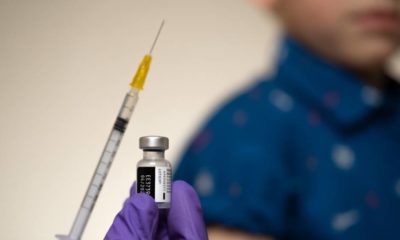Breaking News
Will the COVID-19 Relief Bill Put Cash in Your Pocket?

A $2 trillion dollar economic stimulus package is working its way through the legislature, but the question on many Americans mind is, “am I going to get paid?”
The answer is, “most likely.” If you’ve been impacted by the COVID-19 outbreak, there is a good chance that help is on the way.
Many Americans will also receive a cash payment of up to $1,200 per person.
However, the program has restrictions, so everyone will not receive a check. It’s only available to qualified taxpayers who have a valid social security number and have recently filed a tax return. There are also income restrictions and other things to consider.
Third COVID-19 Relief Bill Becomes Law (H.R. 748) with a Historic $10 Billion in Direct Funding for Tribal Nations. Read more on the law and tribal-specific provisions: https://t.co/TxLbLyh29p #COVID19 #CARESAct #IndianCountry pic.twitter.com/LuchahenAf
— National Congress of American Indians (@NCAI1944) March 27, 2020
Here’s what the average American needs to know about the COVID-19 direct payment program.
You Must Have a Recent Tax Return
The government is sending out direct cash payments to all Americans who meet the specified criteria.
First, you must have filed a 2018 or 2019 tax return in order to be eligible to receive the cash payments. If you haven’t filed a return in the past couple of years, you need to do it as soon as possible or you risk missing out on the cash payment.
According to the IRS website, “Those without 2018 tax filings on record could potentially affect mailings of stimulus checks.” You don’t have to rush to file your 2019 taxes because the IRS extended the filing deadline to July 15th. However, you should at least go back and file for 2018 if you can.
Income Restrictions
Your gross income also affects whether you will receive payments.
If you earned $75,000 or less, you qualify for the full $1,200. Married couples filing jointly can receive up to $2,400 if they earn $150,000 or less.
Taxpayers with children will receive an additional $500 for every qualifying child aged 16 or under.
The IRS will use your most recent return to determine your eligibility.
Partial Benefits
If your gross income exceeded the cutoff limit, you can still receive money but you won’t get as much. For every $100 earned above the cutoff limit, the IRS will deduct $5 from the return.
For example, single filers who earned $80,000 will receive less because they’re $5,000 above the cut-off. At a rate of $5 per $100 over the limit, a total of $250 is subtracted from the maximum benefit rate.
Who Does Not Qualify
Eventually, this penalty eliminates the benefit entirely.
Individuals who earn $99,000 or more and couples earning more than $198,000 will not qualify for a direct payment. You also will not receive a check if someone claims you as a dependent.
Congress has passed a massive COVID-19 relief bill, but could some of the funds go to illegal aliens? https://t.co/kYgIWytDhc #FAIRblog
— FAIR (@FAIRImmigration) March 30, 2020
Additional Considerations
Early information indicates that benefits will also be extended to disabled vets and social security disability recipients, even if they haven’t filed a recent tax return.
If your last tax return was garnished due to a student loan default, you will still get a check. Even legal immigrants will receive checks as long as they have a valid social security number.
The payment program extends to all U.S. territories as well so, if you live in Puerto Rico, you can still receive a check.
Coming Soon
Treasury Secratary Steven Mnuchin says that the government will start sending the checks within three weeks.
Taxpayers don’t have to do anything but wait. The process is entirely automatic, so you should receive a payment if you qualify.
The IRS will use the payment method you specified on your last tax return by default, so you’ll receive the money the same way you received your last refund.
Please note that this is a one-time shot. No other direct payments have been authorized as of yet.
However, some politicians are hinting that more could be on the way. In a statement to CNN, House Majority Leader Nancy Pelosi (D-CA) said, “We think we’ll get more direct payments in another bill.”













8 Comments
What about an 18 year old daughter that goes to school, lives at home and doesn’t work. I don’t see anything for her or us, her parents
My 21 year old, totally disabled daughter will not either.
What kind of question is that? Did you not read the requirements?
If we are essential workers do we qualify for this?
Do those on Social Security that don’t usually need to file a tax return also get the stimulus check? Should we file for 2019?
What about those senior citizens living on Social Security who don’t earn enough to pay taxes?
In my opinion Illegal Aliens should not be entitled to the stimulus after all they broke the law and should be deported!!!
In my opinion Illegal Aliens should not be entitled to the stimulus after all they broke the law and should be deported, if the stimulus payment issues for their deportation I’m all for it!!!